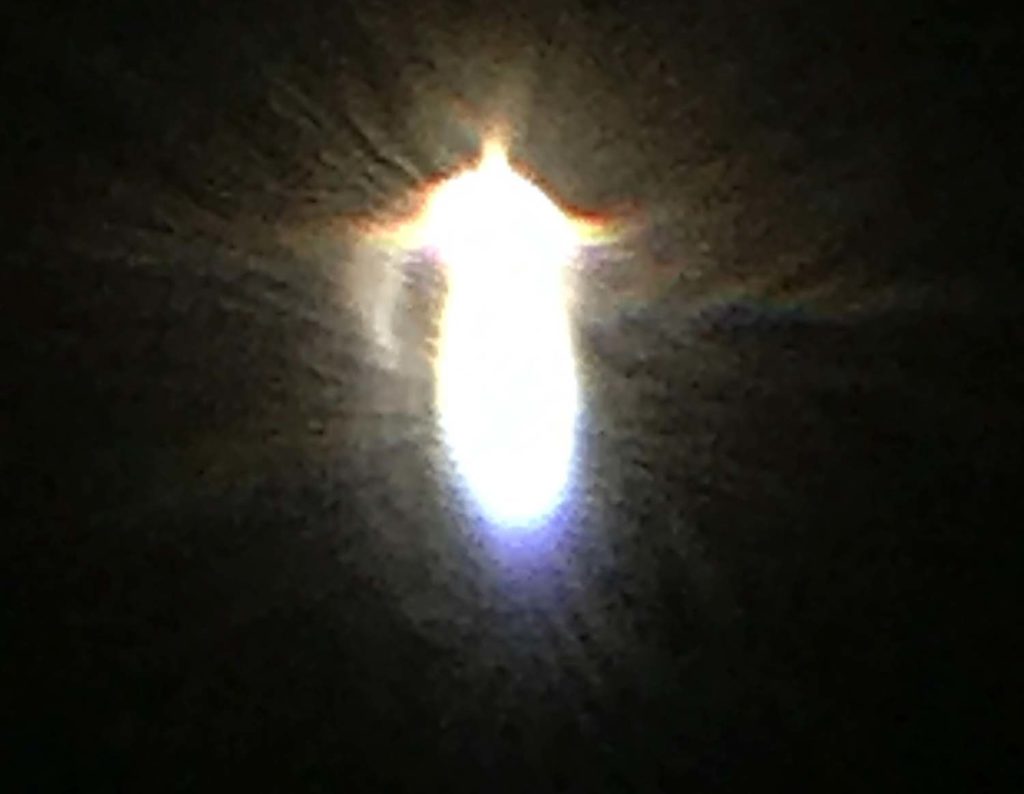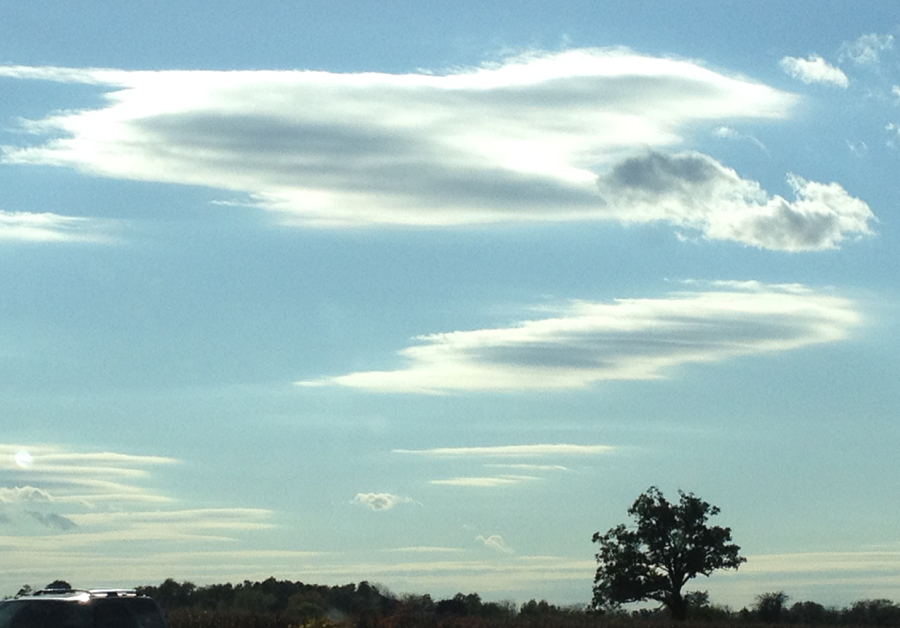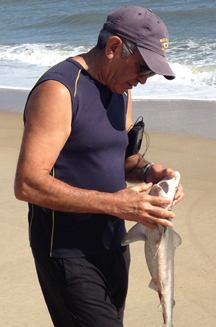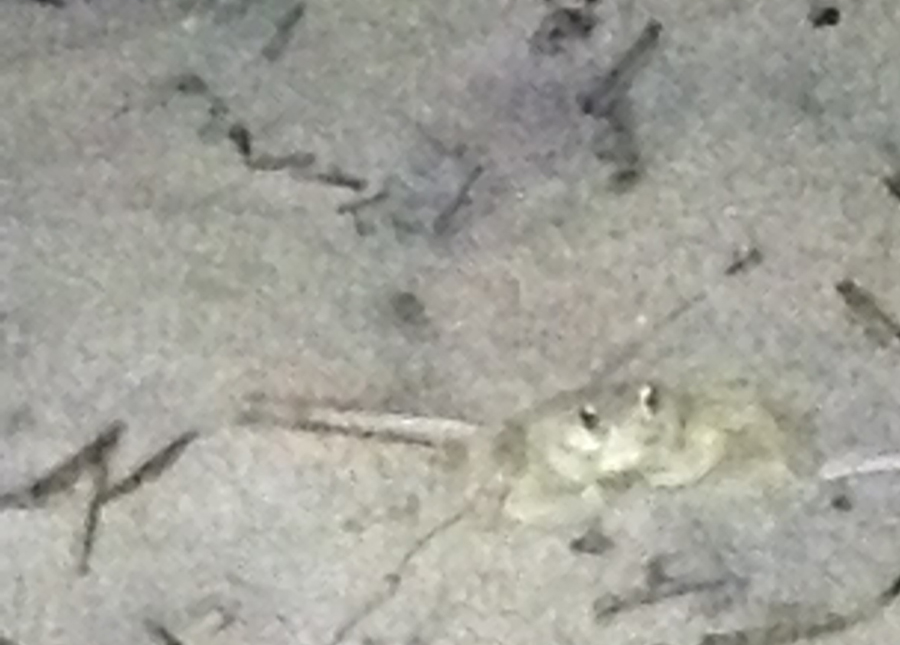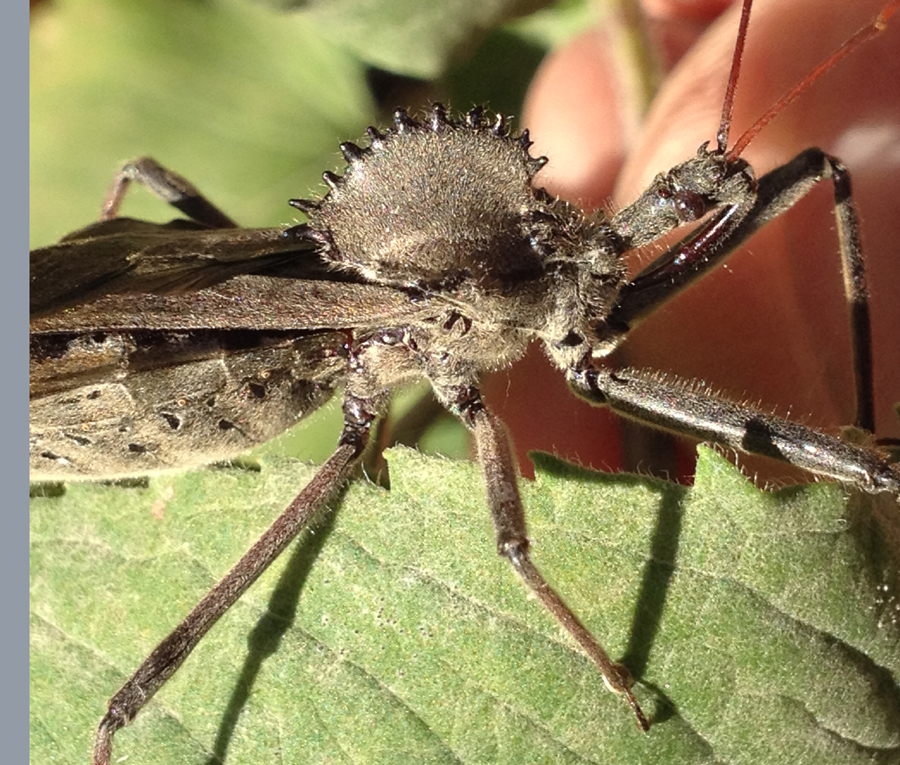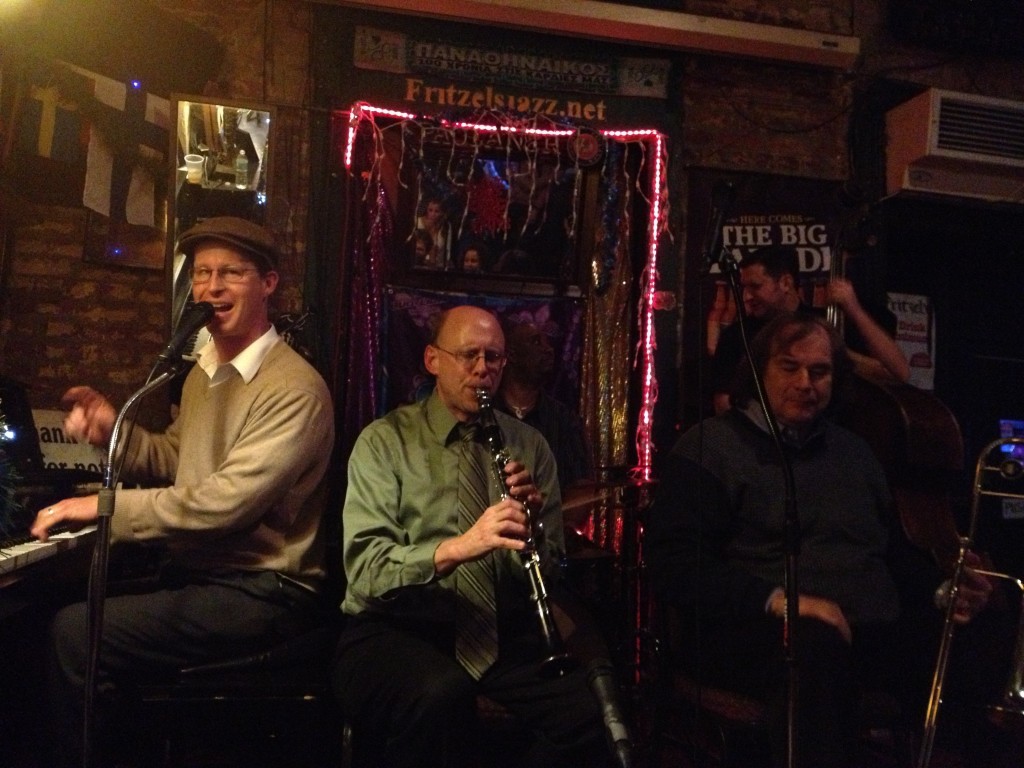The Solar Eclipse of 21 August 2017
Starting at 5:00 a.m. we drove South: 415 miles in 8 hours. Two days before Google Maps had said it could have been done in 6 ½ hrs. (without the Eclipse traffic). We used Google Maps to tell us how bad the traffic jams were, and Weather.gov to watch the developing Infra-Red and visible satellite view of the sky so we could attempt to avoid clouds at our destination.
– there was disturbed weather (colored areas on the map above) to the West of our path but we found a lovely little public park in Bowling Green KY, just 6 miles inside the totality path and just short of the Tennessee border (a white X marks the spot in the map above). They were having a very friendly eclipse party there and happily had room for us on the grass and under the trees. That was fortunate because the highway police were making great efforts to prevent people from stopping on the hard shoulders of the interstates.
The eclipsing moon was just starting its path across the sun when we arrived under clear blue skies. As during the annular eclipse I’d seen decades ago in Toledo, I once again felt slightly uneasy as an ever increasing greyness of the sunlight became more apparent. It was like someone very slowly sliding a dimmer switch to our prime source of light (and life), but with a steadily increasing speed. The change in light quality is very different from that in our daily sunsets. The typical evening setting sun has a warmth to its reducing light. During the eclipse there was a coldness to the illumination as it dimmed – I tried rubbing my eyes to fix it.
The easiest watching tool was my bird spotting scope on a tripod. A science school teacher from Illinois took over focusing and tracking the moving image on a white screen, while I worked on mirrors and cameras:
My straw hat made more pinhole images on my collar and on the telescope screen when I looked down on it:
The ‘pinhole mirror’ was a 3 inch (75 mm) square sample of one quarter inch (6 mm) thick front surface mirror: 80% reflection Pilkington Mirropane™. It has incredible float glass optical flatness. Taping over half the sample provided a bright reflection light to allow easy steering of the mirror, while the exposed 1/16 inch (1.5 mm) top left corner of the taped half, provided a ‘pinhole mirror’ image alongside – all it needed was a screen.
The smaller the pinhole – the sharper the image, but also the fainter. The further back the mirror is from a white projection screen – the larger the image, but the harder it is to hold the mirror steady.
(Next time I should put the mirror on a pan/tilt head on a tripod, and incorporate an operating iris diaphragm, if I can find one).
Both images attracted lots of attention as the light inexorably dimmed.
Meanwhile John Muggenborg in Brooklyn (see Muggphoto on Instagram) had amazing results with his similar front surface mirror, just under one inch square. He had the great idea of fixing the mirror 200 feet (50 meters) away and shifting his screen to track the moving image. His screen was a beautifully effective open box, dark on 4 sides and white at the back:
Susan spotted Venus brightly shining even though the sun was only about 90% covered at the time (near the top right corner in the photo below):
And in the lobby of his Vancouver apartment, Keith projected an image from his small front surface mirror sample, with a hole in a piece of paper over it to reduce the aperture, onto a screen to delight the residents and guests.
Then with an alarming suddenness, and no sound from the sky (apart from people’s cries in the park), the sun went out!
The Corona was too dim to see through the very dark eclipse glasses, and yet it felt too bright to try my binoculars to search for corona details. Rushing with camera and iPhone camera in manual overdrive to try to get an appropriate exposure at full 20 x zoom using new add-on lenses, while dripping sweat on the equipment, I did get the following with full zoom on a Canon G-10.
The corona was too bright to see details. It looks much better in digitally enhanced images as in the APOD site: https://apod.nasa.gov/apod/ap170813.html
In the excitement I forgot to look through polaroid filters but doubt they would have shown anything.
One minute, 10 seconds later into the darkness, a diamond ring burst into view with a startling brilliance – it was the way kids might think that diamonds should appear if all the advertisements were true – the ‘stone’ in the ring was bright as an arc welders spot. You could not look at it even if you tried.
My iPhone could only get:
I don’t seem to have burnt out any receptors in the iPhone but it must have been close!
Then 90 minutes of slow and steady return to the sky we once knew.
So we clearly saw that the overhead sun, and the moon, are truly circular and most probably spherical. Our sun is the only star we can truly ‘see’, meaning whose shape we can ‘discern’ or ‘discriminate’. All the other stars in the sky are so far away that their images, even through the best telescope, do not even cover ONE pixel in a camera.
The popular images of star fields seem to show big, medium and small size stars, but those images are ‘false news’.
The big, bright white circles are simply relatively close stars (more than 30,000,000,000,000 miles (5 light years) away). The reason we see them ‘big’ in the camera is that their light is so incredibly bright that even though it is only shining on part of one pixel receptor, it reflects off it and overexposes many pixels around it. (And, of course, the horizontal and vertical ‘spikes’ coming off the brighter stars are telescope reflections/refraction side effects and don’t really exist!)
So we cannot say for sure, from observation at least, that stars (other than our sun) are not square ﬦ , triangular Δ, or even star shaped ҉ . . But now we have seen our overhead sun to be circular ⃝ and from some elementary astrophysics we can now safely assume that most stars really are spherical!
Spare a thought for the exoplanet hunters. They use this eclipsing method we just saw, along with others, to find planets around distant stars. But the geometry never allows for ‘totality’ to be seen from distant earth, so those astronomers must work with only a very faint effect of partial eclipsing.
Perhaps my biggest surprise was that before the occulting moon had fully moved out of alignment with the sun, the very friendly eclipse watchers in the park packed up and drifted off – like leaving a great movie before the credits have even played.
We waited for the credits to roll, or the bloopers to play (none did), ate the strangest BLT ever for dinner and then joined the crowd for the drive home.
Well, if the traffic was heavy as people converged over 2 days on the 100 mile or so band of totality across the country, when the show was over, they ALL went home at once. Google Maps traffic showed a wonderful screen of a network of red lines (choked roads) heading North and South away from the East-West path of totality. Sadly we were too emotional to think of taking a screen-shot but Leslie and Glen, watching their syzgy just a little South of us in Tennessee did get one of the ‘eclipcalyptic’ traffic (Thank you): The drive home took 9 hours, but we’ve already started making plans to watch the next one!
The drive home took 9 hours, but we’ve already started making plans to watch the next one!












